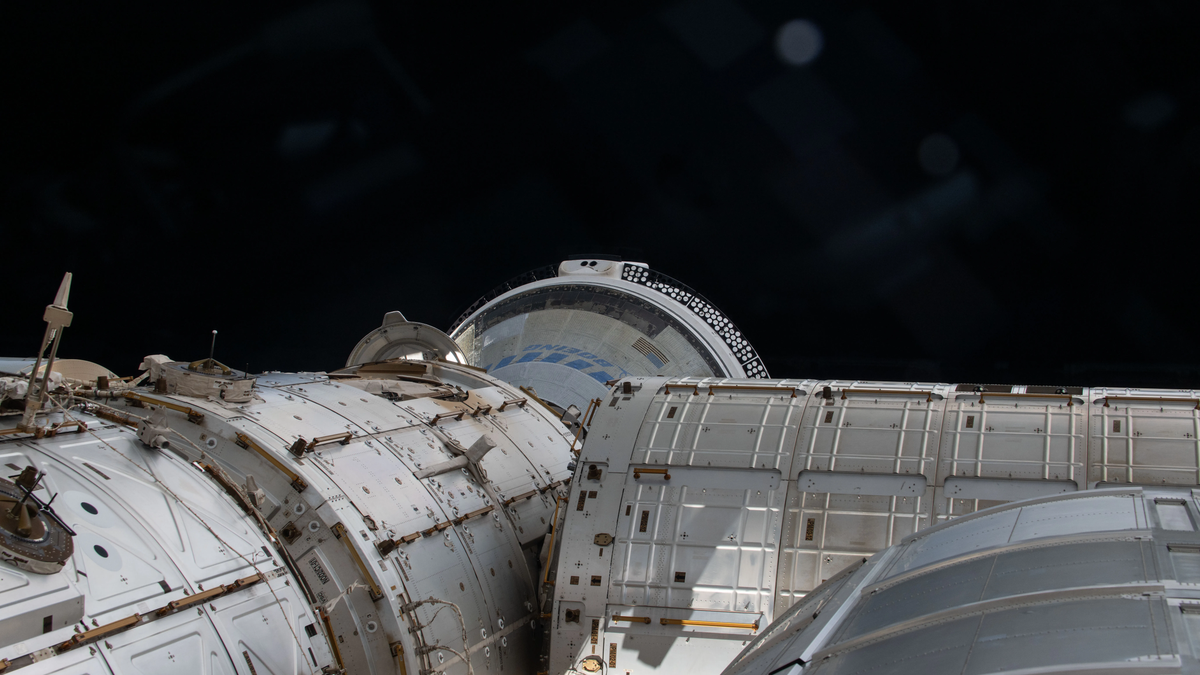
Two NASA astronauts won’t be returning back from the International Space Station (ISS) for an additional four days, the latest in a series of delays that has marred the Starliner program for years.
Suggested Reading
Suggested Reading
NASA and Boeing pushed back the undocking of the Starliner spacecraft for a second time, now targeting June 26 to return the Crew Flight Test mission from the ISS. “We want to give our teams a little bit more time to look at the data, do some analysis and make sure they’re really ready to come home,” Steve Stich, manager of NASA’s Commercial Crew Program, said during a press briefing on Tuesday.
Advertisement
Boeing’s Starliner capsule launched atop United Launch Alliance’s Atlas V rocket on June 5, carrying NASA astronauts Butch Wilmore and Suni Williams. The spacecraft had a dicey docking at the orbiting space station, which was marked by a number of technical issues.
Advertisement
Five of the spacecraft thrusters failed during its approach, and four were subsequently recovered. “The rendezvous was a little bit more demanding on the propulsion system,” Stich said. “In other words, it fired thrusters a little bit more frequently, and it fired them in a little bit more succession, and that caused a little extra heating.”
Advertisement
Starliner also developed five helium leaks, one of which had been identified prior to its launch. The engineering teams now believe the leaks may be related to the activity of the thrusters. Stich reassured reporters that in the past nine days since Starliner docked to the ISS, the leak rates have gone down.
Helium is used in the spacecraft’s thruster systems to allow the thrusters to fire without being combustible or toxic. “We need about seven hours of helium, and we have about 70 hours of margin to get to the deorbit burn,” he said. Easy math tells us that’s 10%.
Advertisement
As it is parked outside the ISS, Starliner teams on the ground are running tests on the vehicle and collecting data before giving it the green light to carry the astronauts back to Earth. “We want to understand how the thrusters will perform during the deorbit burn,” Stich said.
Engineers also are evaluating an RCS oxidizer isolation valve in the service module that’s not properly closed. An RCS, or Reaction Control System, uses thrusters for attitude control and steering, while the oxidizer isolation valve regulates the flow of oxidizer, which is essential for burning fuel in the thrusters.
Advertisement
Despite all these issues, Stich said that Starliner teams “feel really comfortable about return now.”
The Crewed Flight Test is part of NASA’s Commercial Crew Program and is meant to transport crew and cargo to and from the International Space Station (ISS) under a $4.3 billion contract with the space agency. NASA’s other commercial partner, SpaceX, has so far launched eight crews to the space station, while Boeing’s Starliner suffered several delays and technical hiccups along the way.
Advertisement
Boeing launched two uncrewed flights to the ISS, which also suffered from a number of glitches. This is the vehicle’s first time carrying a crew to orbit. “This is a test flight and we’re going to learn some things,” Mark Nappi, vice president and program manager of the Commercial Crew Program at Boeing, said during the press briefing. “So here we are, we’ve learned that our helium system is not performing as designed, albeit manageable, it’s still not working like we had designed it, so we got to go figure that out.”
NASA’s Stich reiterated that the Starliner teams also learned that the vehicle’s service module is “a very complicated module.” “We did a series of tests [on the ground]…and now we’re kind of working through learning about this vehicle in a different way,” he added. “Perhaps we could have done different testing on the ground to characterize some of that ahead of time.”
Advertisement
Both NASA and Boeing officials confirmed that the Starliner spacecraft is safe to return astronauts as of today, but teams have decided to keep it docked to the ISS where they can run more tests on the vehicle in orbit. Starliner can stay docked to the ISS for a maximum of 45 days during its current mission.
Starliner’s journey home is expected to take around six hours, and the spacecraft will land in the Utah desert.
Advertisement
For more spaceflight in your life, follow us on X and bookmark Gizmodo’s dedicated Spaceflight page.
Services Marketplace – Listings, Bookings & Reviews